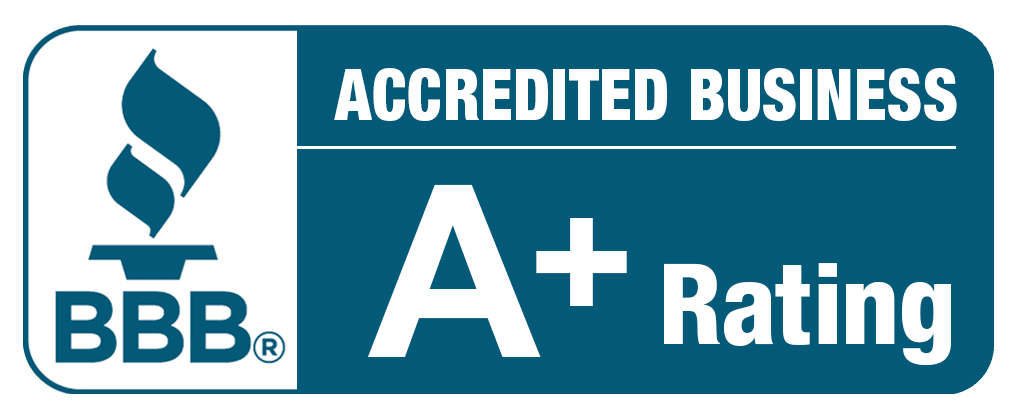
For most homeowners, it’s an annual ritual. Sometime in late summer, an official-looking envelope arrives. It might be your “Truth in Millage” (TRIM) notice, or it might be the actual property tax bill itself. You open it, and your eyes immediately scan for the bottom-line dollar amount.
Then, you look at the breakdown: a confusing list of line items with cryptic names, some labeled “Ad Valorem” and others “Non-Ad Valorem.”
What does this all mean? Are they the same thing? Why are there so many different charges?
It’s tempting to just sigh, write the check, and file the paper away. But as a homeowner, understanding what you are paying for is the first step to being an empowered and informed property owner. At Barnes Walker, we believe in demystifying complex topics. Let’s break down your property tax bill in a way that makes sense.
The Big Idea: Taxes vs. Assessments
Before we get into the Latin terms, let’s establish the main concept. On your bill, you are paying for two fundamentally different types of charges:
- Taxes: This is your contribution to the general pot of money that funds government operations. Think of it as your “membership fee” for living in your county and city.
- Assessments (Fees): This is a specific fee you pay for a specific service or benefit your property receives. Think of this as an “à la carte” charge, like a utility bill.
With that in mind, “Ad Valorem” and “Non-Ad Valorem” are simply the official, legal terms for these two different charges.
Deep Dive: Ad Valorem Taxes (The “Value” Tax)
“Ad Valorem” is a Latin phrase that means “according to value.”
This is your classic property tax. It is a tax based entirely on the value of your property. The core principle is simple: a more valuable property pays a larger share of the general government costs.
Think of it this way: The county, your city, and the school board all need money to operate for the year. They need to fund schools, pay for law enforcement, maintain public parks, and run libraries. They calculate their total budget and then divide that cost among all property owners based on each property’s value.
Your Ad Valorem tax is not a flat fee. Your neighbor in a small condo pays less, while your neighbor in a large waterfront home pays more.
How is it Calculated? The Two-Part Formula
There are two key components that determine your Ad Valorem tax bill:
1. The Assessed Value of Your Property:
- Each year, your local County Property Appraiser determines the “just value” (market value) of your home.
- This value is then adjusted for any exemptions you may have, most commonly the Homestead Exemption.
- The final, lower number is your “taxable value.” This is the number that matters for the tax calculation.
2. The Millage Rate:
- This is the most confusing part for most people, but the concept is simple. “Millage” is the tax rate.
- One “mill” is 1/1000th of a dollar, or $1 in tax for every $1,000 of taxable value.
- You don’t have one single millage rate. Instead, several different government bodies (called “taxing authorities”) set their own millage rates.
On your tax bill, you’ll see these broken out. For example:
- County Commission: 7.5 mills
- School Board: 6.0 mills
- City Council: 4.0 mills
- Water Management District: 0.5 mills
- Total Millage Rate: 18.0 mills
Let’s Do the Math:
Imagine your home has a taxable value of $300,000 and your total millage rate is 18 mills.
- Formula: (Taxable Value / 1,000) x Millage Rate = Ad Valorem Tax
- Calculation: ($300,000 / 1,000) x 18 = $300 x 18 = $5,400
This $5,400 is your total Ad Valorem tax, which is then distributed to the school board, the county, and the city according to the mills they each levied.
What it Funds:
- Public schools
- Police and sheriff’s departments
- Public libraries and parks
- General county and city government operations
Deep Dive: Non-Ad Valorem Assessments (The “Benefit” Fee)
Now we come to the second category. “Non-Ad Valorem” simply means “not according to value.”
These are not taxes. They are fees, or “assessments,” for a specific service or infrastructure project that directly benefits your property.
The value of your home is completely irrelevant for these charges.
This is the “utility bill” analogy. You and your millionaire neighbor both pay the exact same fee for weekly trash collection. Why? Because you both put one trash can on the curb and receive the exact same service. It wouldn’t be fair to charge your neighbor 10x more for the same trash pickup just because their house is worth more.
How is it Calculated?
Instead of value, these assessments are based on a “unit of measure.” The government agency calculates the total cost of providing a service (e.g., the total cost of city-wide trash collection) and divides that cost fairly among all the properties that benefit.
This “fair share” can be calculated in a few ways:
- A flat fee per parcel: This is the most common. (e.g., $300 per year for solid waste).
- A fee per front foot: This is often used for infrastructure like sidewalks or sewer lines (e.g., $20 per foot of property that fronts the new sewer line).
- A fee per residential unit: (e.g., a “fire rescue fee” of $150 per home).
What it Funds (Common Examples):
- Solid Waste: Trash, recycling, and yard waste collection.
- Fire & Rescue: Many counties use a flat fee to fund fire departments, ensuring all properties contribute equally to the service’s availability.
- Sewer/Water: Charges for maintaining the water and sewer systems available to your home.
- Street Lighting: A fee to cover the cost of electricity and maintenance for streetlights in your neighborhood.
- Community Development Districts (CDDs): This is a very common one in newer developments. A CDD is a special district that issues bonds to pay for the infrastructure in your specific community (like the roads, gates, ponds, and underground utilities). Your “non-ad valorem” CDD assessment is your annual payment on that bond.
Why Does This Distinction Matter? (Your Rights as a Homeowner)
Understanding the difference between “value” taxes and “benefit” fees is critical when you believe your bill is wrong. Your method of challenging the charge is completely different.
Challenging Ad Valorem (Value) Taxes:
If you think your Ad Valorem tax is too high, you have two primary options:
- Challenge Your Property’s Value: You believe the Property Appraiser’s assessed value is higher than your home’s true market value. You must file an appeal with the Value Adjustment Board (VAB) by a specific deadline (usually in September). You cannot simply show up at a county meeting and complain your value is too high; there is a formal process.
- Challenge the Millage Rate: You believe the tax rate itself is too high. This is not an appeal, but a political process. You must attend the public “TRIM” hearings held by your City Commission, County Commission, and School Board (the dates are on your TRIM notice) and voice your opinion before they vote to adopt the final budget and millage rates.
Challenging Non-Ad Valorem (Benefit) Fees:
Saying “my house isn’t worth that much” will do nothing. The value is irrelevant.
To challenge a Non-Ad Valorem assessment, you must prove that the fee itself is improper.
- Is there a factual error? (e.g., “The bill charges me for ‘solid waste,’ but I live in an area that doesn’t have public trash service.”)
- Is the calculation wrong? (e.g., “I’m being charged a multi-family duplex rate, but I own a single-family home.”)
- Is the assessment invalid? This is a more complex legal argument, but it generally relates to proving the assessment does not provide a proper “special benefit” to your property as required by law.
The Bottom Line: Putting It All Together
Your property tax bill is one document for a simple reason: efficiency.
The Tax Collector acts as the central billing and collection agent for all the different government bodies. The School Board, the County, the City, the Waste Management District, and the CDD all submit their approved rates and fees to the Tax Collector, who compiles them into one unified bill for you.
This bill is a story of your contribution to your community.
- The Ad Valorem portion is your “according to value” share of the general, collective services that make your community a place to live.
- The Non-Ad Valorem portion is your “not according to value” fee for the specific, direct services and benefits delivered right to your front door.
Now, when you open that envelope, you won’t just see a number. You’ll see a detailed receipt, and you’ll have the knowledge to know exactly what you’re paying for.
Disclaimer: The information and opinions provided are for general educational, informational or entertainment purposes only and should not be construed as legal advice or a substitute for consultation with a qualified attorney. Any information that you read does not create an attorney–client relationship with Barnes Walker, Goethe, Perron & Shea, PLLC, or any of its attorneys. Because laws, regulations, and court interpretations may change over time, the definitions and explanations provided here may not reflect the most current legal standards. The application of law varies depending on your particular facts and jurisdiction. For advice regarding your specific situation, please contact one of our Florida attorneys for personalized guidance.
Visit our legal department pages:
Real Estate Attorneys
Business Attorneys
Litigation Attorneys
Estate Planning Attorneys
Inheritance Attorney
Probate & Trusts
Trust • Experience • Results
Ready to Get Started?
Get started with Barnes Walker today.












